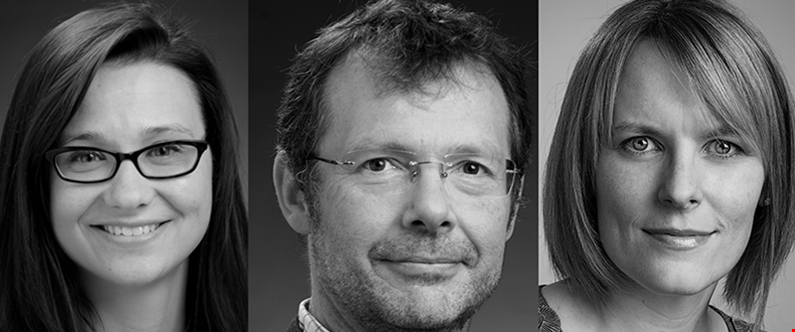How to Navigate the Misinformation Ecosystem

Jamie Gray
Director, Distributed eLibrary
Associate Librarian
Weill Cornell Medicine-Qatar
Ross MacDonald
Scholarly Communications Librarian
Weill Cornell Medicine-Qatar
Sinead O’Rourke
Content Development Specialist
Weill Cornell Medicine-Qatar
Health misinformation has been around for centuries and is found across topics including outbreaks, chronic conditions, and treatments1. Several studies have explored the levels of misinformation in YouTube videos on various health topics. These found 21-33 percent of the content to be misleading or non-factual2,4,5. Misinformation is complex and driven by a variety of factors at the systems, technological, communication, societal, and personal levels. Additionally, changes in how information is shared have allowed for faster spread of content at a scope and scale not previously possible.
Among the many contributors to misinformation are imperfections in – and misunderstanding of – various aspects of the systems used to report scientific research. These are important, as incorrect or misleading reports published with the “stamp of credibility” that science lends can become influential sources of misinformation outside the scientific community. Examples of where error can occur include:
- misunderstanding and mis-citing previous research studies
- snowballing publication bias3
- misusing preprints outside of their intended purpose
- trading quality for speed in the peer review process
- increasing predatory publishing, and
- inconsistent article retraction practices, leading to retracted articles being cited post-retraction6
These process-related issues, coupled with low levels of health, numeracy, digital, and scientific literacies in the population can exacerbate misinformation spread. The end result is an erosion of trust in the very institutions working to keep the population safe and healthy.
All members of the healthcare community must work together to combat misinformation, whether on social media or during a patient consultation7. Healthcare professionals should be aware of their profession’s code of conduct when engaging with the issue of health misinformation, particularly regarding recognizing their area of expertise. Healthcare providers can use their trusted online platform to help combat health-related misinformation. When doing this, they should:
- clearly outline professional credentials and areas of expertise within their profile
- be aware that the discussion can be read, viewed, and interpreted by other audiences even if they are addressing a peer
- be intentional in their purpose and know their target audience
- work to demonstrate empathy and a genuine curiosity around the topic8
- ensure they are discussing topics within their area of expertise
- determine when not to engage on a given topic, as sometimes engagement can help contribute to the visibility of health misinformation9
Quality information is vital to making healthy, timely, and informed health-related decisions. The clinical community must work to reduce errors in the scientific process, advocate for improved literacies, and communicate empathically and transparently. The threat of unchecked health misinformation impacts both the personal and population level, so we must work together to tackle misinformation as part of our continued commitment to professionalism.
References
- Alvarez-Galvez, J. (2021). Prevalence of Health Misinformation on Social Media: Systematic Review. Journal of Medical Internet Research., 23(1). https://org/10.2196/17187
- Biggs, T. C., Bird, J. H., Harries, P. G., & Salib, R. J. (2013). YouTube as a source of information on rhinosinusitis: the good, the bad and the ugly. The Journal of laryngology and otology, 127(8), 749–754. https://doi.org/10.1017/S0022215113001473
- de Vries, Y. A., Roest, A. M., de Jonge, P., Cuijpers, P., Munafò, M. R., & Bastiaansen, J. A. (2018). The cumulative effect of reporting and citation biases on the apparent efficacy of treatments: the case of depression. Psychological Medicine, 48(15), 2453-2455. https://doi.org/10.1017/s0033291718001873
- Kumar, N., Pandey, A., Venkatraman, A., & Garg, N. (2014). Are video sharing web sites a useful source of information on hypertension?. Journal of the American Society of Hypertension : JASH, 8(7), 481–490. https://doi.org/10.1016/j.jash.2014.05.001
- Qi, J., Trang, T., Doong, J., Kang, S., & Chien, A. L. (2016). Misinformation is prevalent in psoriasis-related YouTube videos. Dermatology online journal, 22(11), 13030/qt7qc9z2m5.
- Serghiou, S., Marton, R. M., & Ioannidis, J. P. A. (2021). Media and social media attention to retracted articles according to Altmetric. PLOS ONE, 16(5), e0248625. https://doi.org/10.1371/journal.pone.0248625
- Armstrong PW, Naylor CD. Counteracting Health Misinformation: A Role for Medical Journals?. JAMA. 2019;321(19):1863-1864. doi:10.1001/jama.2019.5168
- Overton A, Lowry A. Conflict Management: Difficult Conversations with Difficult People. Clin Colon Rectal Surg. 2013;26(04):259-264. doi:10.1055/s-0033-1356728
- Broniatowski, D. A., Jamison, A. M., Qi, S., AlKulaib, L., Chen, T., Benton, A., Quinn, S. C., & Dredze, M. (2018). Weaponized Health Communication: Twitter Bots and Russian Trolls Amplify the Vaccine Debate. American Journal of Public Health, 108(10), 1378–1384. https://doi.org/10.2105/ajph.2018.304567